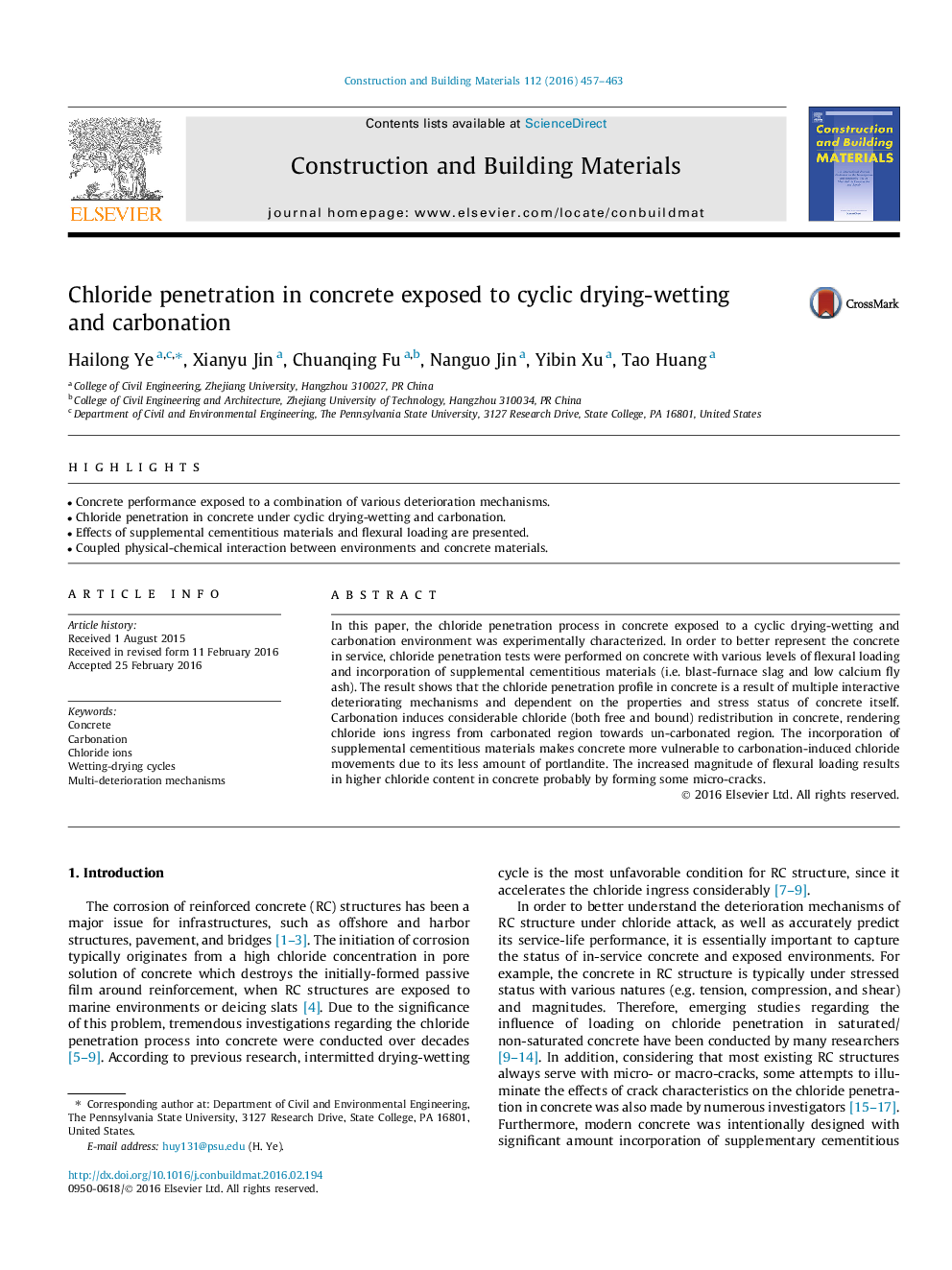| Article ID | Journal | Published Year | Pages | File Type |
|---|---|---|---|---|
| 6719180 | Construction and Building Materials | 2016 | 7 Pages |
Abstract
In this paper, the chloride penetration process in concrete exposed to a cyclic drying-wetting and carbonation environment was experimentally characterized. In order to better represent the concrete in service, chloride penetration tests were performed on concrete with various levels of flexural loading and incorporation of supplemental cementitious materials (i.e. blast-furnace slag and low calcium fly ash). The result shows that the chloride penetration profile in concrete is a result of multiple interactive deteriorating mechanisms and dependent on the properties and stress status of concrete itself. Carbonation induces considerable chloride (both free and bound) redistribution in concrete, rendering chloride ions ingress from carbonated region towards un-carbonated region. The incorporation of supplemental cementitious materials makes concrete more vulnerable to carbonation-induced chloride movements due to its less amount of portlandite. The increased magnitude of flexural loading results in higher chloride content in concrete probably by forming some micro-cracks.
Related Topics
Physical Sciences and Engineering
Engineering
Civil and Structural Engineering
Authors
Hailong Ye, Xianyu Jin, Chuanqing Fu, Nanguo Jin, Yibin Xu, Tao Huang,
